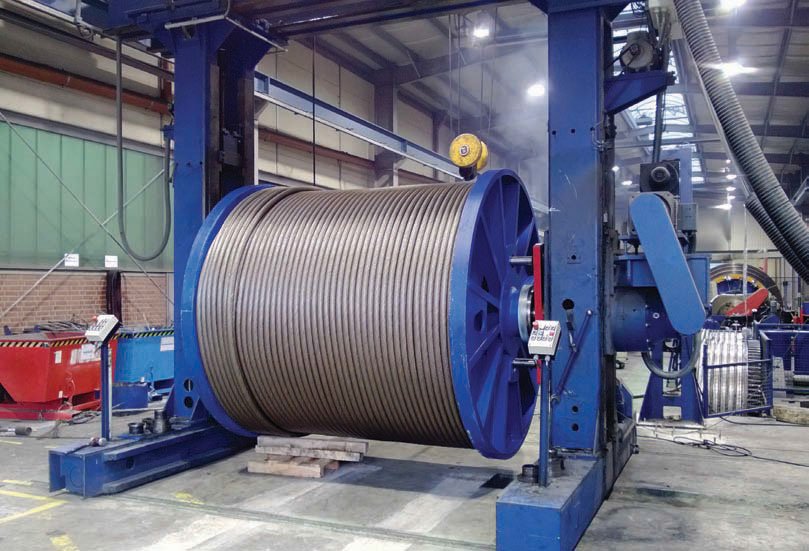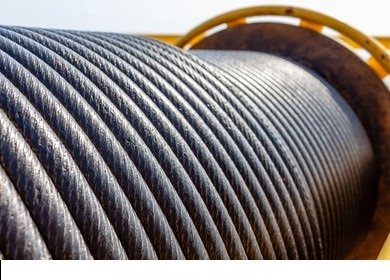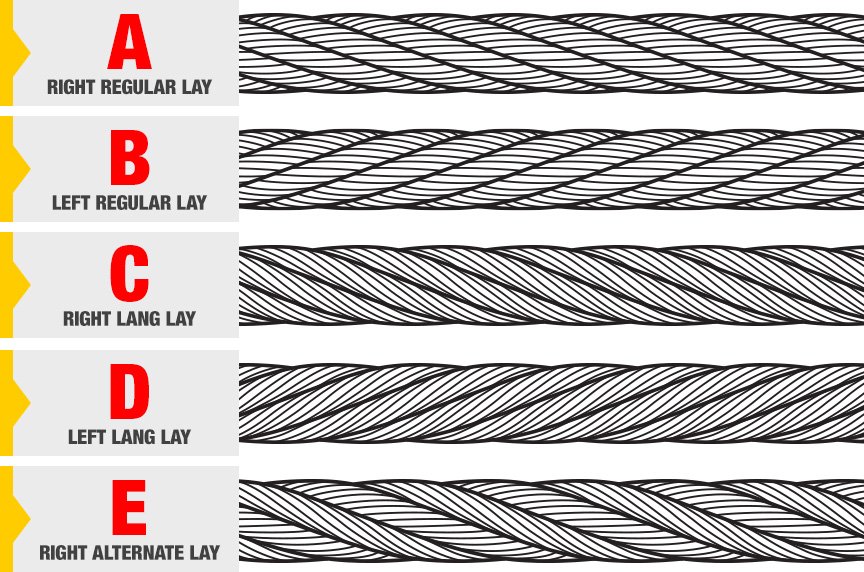- Introduction to Galvanized Wire Rope
Galvanized wire rope refers to a type of wire rope that has been coated with a layer of zinc through a process known as galvanization. This coating provides excellent corrosion resistance, making galvanized wire ropes suitable for use in harsh environments, particularly those exposed to moisture, chemicals, and outdoor weather conditions. Galvanization is typically achieved through either hot-dip galvanizing or electro-galvanizing, both of which involve the deposition of a protective zinc layer onto the wire strands.
- Manufacturing Process of Galvanized Wire Rope
The manufacturing process for galvanized wire rope involves several steps:
Wire Drawing: The process begins with high-quality steel wire being drawn to the required diameter. The wire’s composition plays a critical role in the final strength and performance of the rope.
Galvanization: After the steel wire is drawn, it undergoes the galvanization process. In hot-dip galvanizing, the wire is dipped into molten zinc, forming a protective coating. In electro-galvanizing, a zinc layer is deposited onto the wire through an electrolytic process. Hot-dip galvanization offers superior corrosion resistance due to the thicker coating compared to electro-galvanizing.
Stranding and Rope Formation: The galvanized wires are then twisted or stranded together to form the desired wire rope. This can involve multiple layers or strands depending on the rope’s design and intended application.
Lubrication: After the rope is formed, it is typically lubricated to reduce friction between the individual wires and strands, enhancing its wear resistance and lifespan.
- Advantages of Galvanized Wire Rope
Corrosion Resistance: The primary advantage of galvanized wire ropes is their resistance to corrosion. The zinc coating acts as a sacrificial anode, protecting the underlying steel from rust and corrosion, which is especially beneficial in environments exposed to moisture, chemicals, or marine conditions.
Increased Durability: Galvanized coatings increase the lifespan of the wire rope by protecting it from the damaging effects of environmental elements, making it more suitable for long-term use in harsh conditions.
Cost-Effective: While galvanized wire ropes are more expensive than uncoated ropes, they are more affordable compared to stainless steel ropes, making them a cost-effective solution for applications requiring moderate corrosion resistance.
Improved Strength: The zinc coating also offers some added strength to the wire, as it helps to minimize the impact of wear on the steel.
- Applications of Galvanized Wire Rope
Galvanized wire rope is used in a variety of industries due to its corrosion-resistant properties. Some of its key applications include:
Marine and Offshore: Galvanized wire ropes are widely used in marine environments for mooring, anchoring, and lifting operations due to their resistance to seawater corrosion.
Construction: Galvanized wire ropes are employed in cranes, elevators, hoists, and rigging for lifting and securing heavy loads, where exposure to the elements can cause rapid deterioration of uncoated ropes.
Mining and Quarrying: The harsh conditions of underground mining or quarrying environments require ropes that are resistant to corrosion from water, chemicals, and dust. Galvanized wire ropes are a reliable choice in these sectors.
Agriculture: Galvanized wire ropes are used in agricultural machinery and applications such as fence wiring, tensioning systems, and hoists for lifting crops and tools.
Transportation and Lifting: In industries that require frequent use of lifting equipment, such as construction cranes or cargo handling in shipping, galvanized wire ropes offer an effective solution for hoisting and securing loads.
- Types of Galvanized Wire Rope
Galvanized Steel Wire Rope (Standard): These ropes have a standard zinc coating, offering basic corrosion resistance for general outdoor use.
Preformed Galvanized Wire Rope: These ropes are formed and treated before use, ensuring that they retain their shape and resist kinking during handling and installation.
Plastic-Coated Galvanized Wire Rope: A layer of plastic coating is applied over the galvanized wire rope for additional protection against abrasion, UV rays, and chemicals. This type is especially useful in applications where the rope will be in contact with rough surfaces or exposed to sunlight.
- Maintenance and Care for Galvanized Wire Rope
To maximize the lifespan of galvanized wire ropes, regular maintenance and care are essential:
Inspection: Regularly inspect the rope for signs of wear, corrosion, or damage. Pay close attention to areas where the rope contacts other surfaces, as these points are prone to abrasion.
Lubrication: Reapply lubricants to the rope as needed to reduce friction between wires and prevent corrosion. Lubrication also aids in preventing strand breakage and maintaining the rope’s flexibility.
Cleaning: Clean the rope periodically to remove dirt, debris, and salt deposits, particularly if the rope is used in marine or industrial environments.
Storage: When not in use, store galvanized wire ropes in a dry, cool place to prevent unnecessary exposure to moisture and chemicals that could accelerate corrosion.
- Conclusion
Galvanized wire ropes provide a reliable solution for applications where corrosion resistance and durability are paramount. Their ability to withstand harsh environmental conditions makes them a preferred choice across various industries, from construction and mining to marine and agricultural applications. The combination of cost-effectiveness and corrosion protection ensures that galvanized wire ropes continue to be an essential tool in a wide range of heavy-duty operations.




